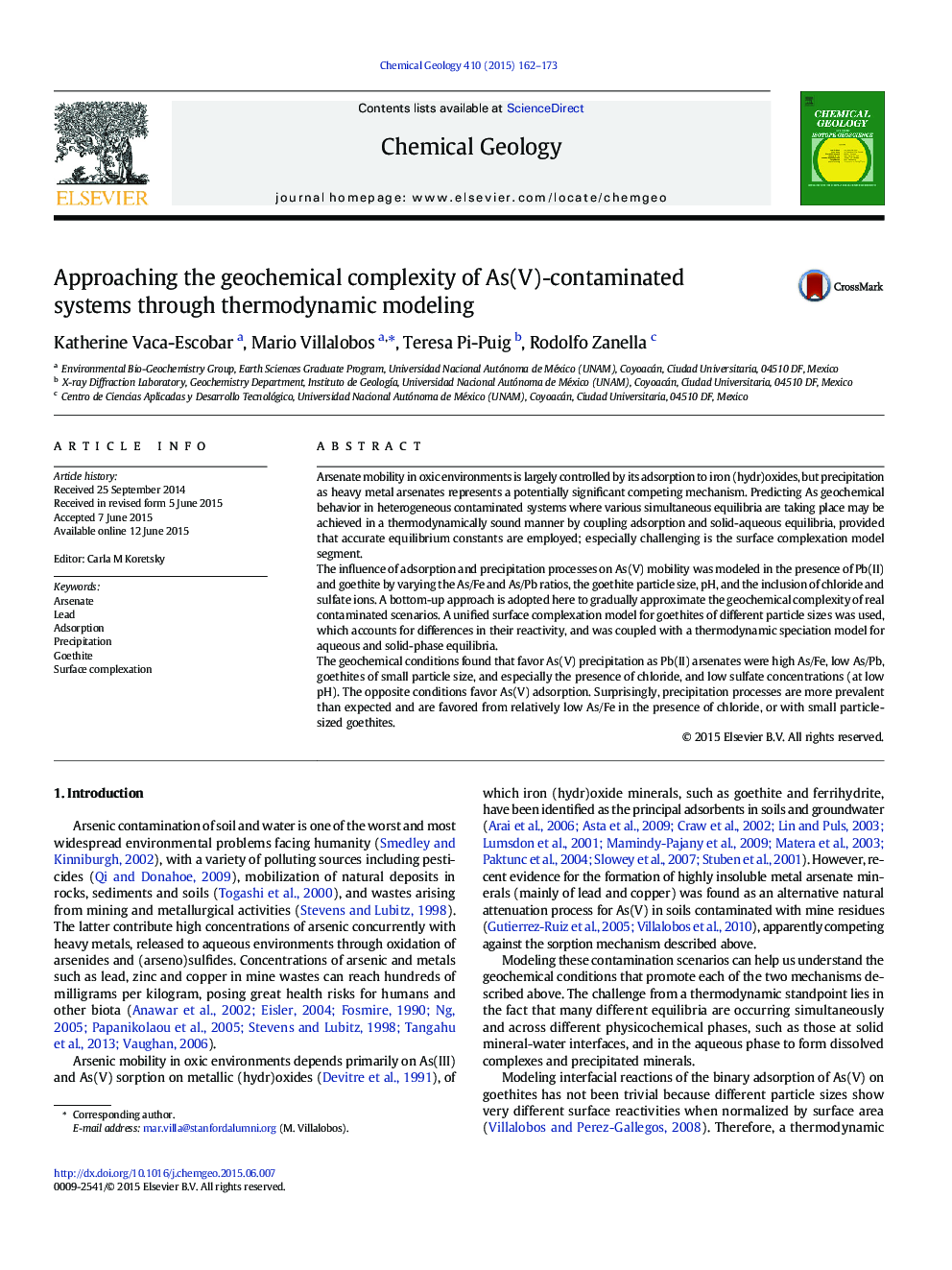| کد مقاله | کد نشریه | سال انتشار | مقاله انگلیسی | نسخه تمام متن |
|---|---|---|---|---|
| 4698492 | 1637564 | 2015 | 12 صفحه PDF | دانلود رایگان |

• A thermodynamic adsorption + precipitation model describes As(V) geochemical behavior in As(V)/metals(II)/goethite.
• Pb(II) impacts As(V) adsorption behavior by formation of Pb-arsenate minerals, but only in high-surface area goethites.
• Precipitation is favored by high-surface area goethites, high As/Fe, low As/Pb, and especially Cl−.
• Adsorption is favored by low-surface area goethites, low As/Fe, high As/Pb, and high SO42 −.
Arsenate mobility in oxic environments is largely controlled by its adsorption to iron (hydr)oxides, but precipitation as heavy metal arsenates represents a potentially significant competing mechanism. Predicting As geochemical behavior in heterogeneous contaminated systems where various simultaneous equilibria are taking place may be achieved in a thermodynamically sound manner by coupling adsorption and solid-aqueous equilibria, provided that accurate equilibrium constants are employed; especially challenging is the surface complexation model segment.The influence of adsorption and precipitation processes on As(V) mobility was modeled in the presence of Pb(II) and goethite by varying the As/Fe and As/Pb ratios, the goethite particle size, pH, and the inclusion of chloride and sulfate ions. A bottom-up approach is adopted here to gradually approximate the geochemical complexity of real contaminated scenarios. A unified surface complexation model for goethites of different particle sizes was used, which accounts for differences in their reactivity, and was coupled with a thermodynamic speciation model for aqueous and solid-phase equilibria.The geochemical conditions found that favor As(V) precipitation as Pb(II) arsenates were high As/Fe, low As/Pb, goethites of small particle size, and especially the presence of chloride, and low sulfate concentrations (at low pH). The opposite conditions favor As(V) adsorption. Surprisingly, precipitation processes are more prevalent than expected and are favored from relatively low As/Fe in the presence of chloride, or with small particle-sized goethites.
Figure optionsDownload as PowerPoint slide
Journal: Chemical Geology - Volume 410, 2 September 2015, Pages 162–173